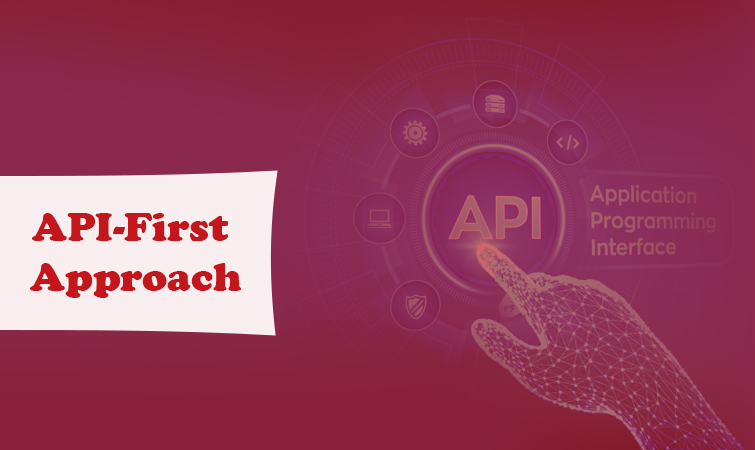API-first approach
The API-first approach is a software development strategy in which an application programming interface (API) is created before any code is written. An API, of course, is a piece of software that enables one application to obtain data from another. It allows several applications to communicate with one another. Best web development company in Chennai develops software using API-first approach.
APIs are used in almost all of the programs we use on a regular basis. As a result, it makes more sense to think about, create, and test an API before writing software code, rather than the other way around. An API-first strategy entails treating APIs as “most important,” with the idea that they are critical business assets on which the company relies.
Every API is built around a contract expressed in an API description language like OpenAPI in this method. The consistency, reusability, and broad interoperability of the eventual API are all ensured by starting with an API contract. Consider yourself and a friend stuck on opposite banks of a river. You want to offer some goods to a friend, but you’ll need to build something to transport the items across the river. So, what exactly do you do?
To begin, you’d need to construct a raft out of any accessible materials. Although you may have a standard in mind while creating the raft, you will not know what type of objects it can carry until it is completed. So you’d put it to the test first. You may need to reinforce it after testing so that it can convey additional supplies. The raft is the API in the API-first strategy. You must first design and construct the API, then adapt it to meet your needs.
API-First Approach versus Code-First Development
In software development, code-first development and API-first development are diametrically opposed approaches. Code-first development, as the name implies, occurs when developers write the application’s code and design its functionality first, then add the API at the end.
The API-first strategy, as described in the preceding section, operates in the other direction. Developers consider the API first and foremost in this document. “Your team begins by building an interface for their application,” says developer Joyce Lin. The team will rely on this interface to build the remainder of the application after the API has been developed.”
Code-first development can lead to lengthy delays and numerous modifications. Etsy is a good illustration of this. The e-commerce website had to integrate features and changes twice: once on the website and once on the API that powers its iOS and Android apps. The procedure takes a long time and is expensive. What is the solution? Etsy shifted to an API-first strategy.
Advantages of Using the API-First Approach
Most developers these days use an API-first strategy, especially those using agile project management, which breaks down projects into smaller, more manageable tasks. Three key advantages of the particular development technique are listed below.
The necessity of design papers and contracts is emphasized in both API-first and API design-first approaches. For API design and development teams, they provide a dependable source of truth. Both approaches incorporate stakeholders early in the design process, before any code is written, which has various advantages, including:
Lower development costs
The API code can be reused and recycled for other projects when using the API-first method. As a result, development teams don’t have to start from scratch because they already have a foundation. As a result, code writing costs, such as human resource hours, are drastically decreased.
Reduced development time
APIs are simple to integrate into apps, allowing developers to complete projects rapidly. As a result, apps can reach the market faster and make revenue sooner.
Fewer chances of failure
API failure has a negative impact on every aspect of your business, from marketing to customer service. The API-first strategy reduces the likelihood of such failure because the API architecture has already been tested, making it trustworthy and stable. Furthermore, any feature or correction can be implemented without requiring the API to be redesigned.
Disadvantages of a Code-First Approach
Choosing a code-first approach to building APIs will almost always result in a slew of issues:
Bottlenecks
When developers design APIs using a code-first approach, they often follow a waterfall paradigm, which leads to bottlenecks. Teams working on the API will complete each phase in order, thus they will not be able to work in parallel.
APIs that are either useless or bloated
When you code first and then gather feedback after numerous iterations of the programmed API, you frequently wind up with bloated APIs with resources that consumers don’t require. You also run the danger of creating APIs that are useless to your consumers.
No documentation
After a team has completed coding an API, generating documentation that the team must maintain can feel like a massive task. As a result, documentation frequently becomes an afterthought rather than a priority, and it is never completed.
Wasted Time and Money
Changing an already-coded API is significantly more expensive than changing an API design. Once you get input from users, you usually have to go through and write a lot of code to correct the API. If you develop first and then document, you can end up with new versions of endpoints and APIs because no one on your team recalls how the code works.
While coding first allows you to design APIs quickly, you may end up with more issues than the quick procedure is worth. You’ve come up with a fantastic API concept that will benefit the company. What are your options after that? You could write down the API’s business requirements before coding it. Perhaps you’ll start by describing your API in a specification language like OpenAPI. Alternatively, you may persuade your company to develop your API idea into an API-first solution.
Finally, you want to deliver a fantastic API. The first step is to choose which development strategy will assist you in accomplishing this. Both API-first and API design-first techniques should be used if you want to construct the highest-quality, consistent APIs available. Both methods concentrate on the creation of API contracts. As a result, if you adopt one strategy, you’re already halfway there with the other. When you combine the benefits of both tactics, you get the best of both worlds.
Take, for example, PayPal. PayPal just underwent a large-scale API-first change, embracing an “APIs are products” attitude. Developers generate service contracts using OpenAPI and then build APIs using a design-first process as much as possible, according to the company’s goal. The PayPal teams had to reorganize and streamline the API design and development process, which took some time.

